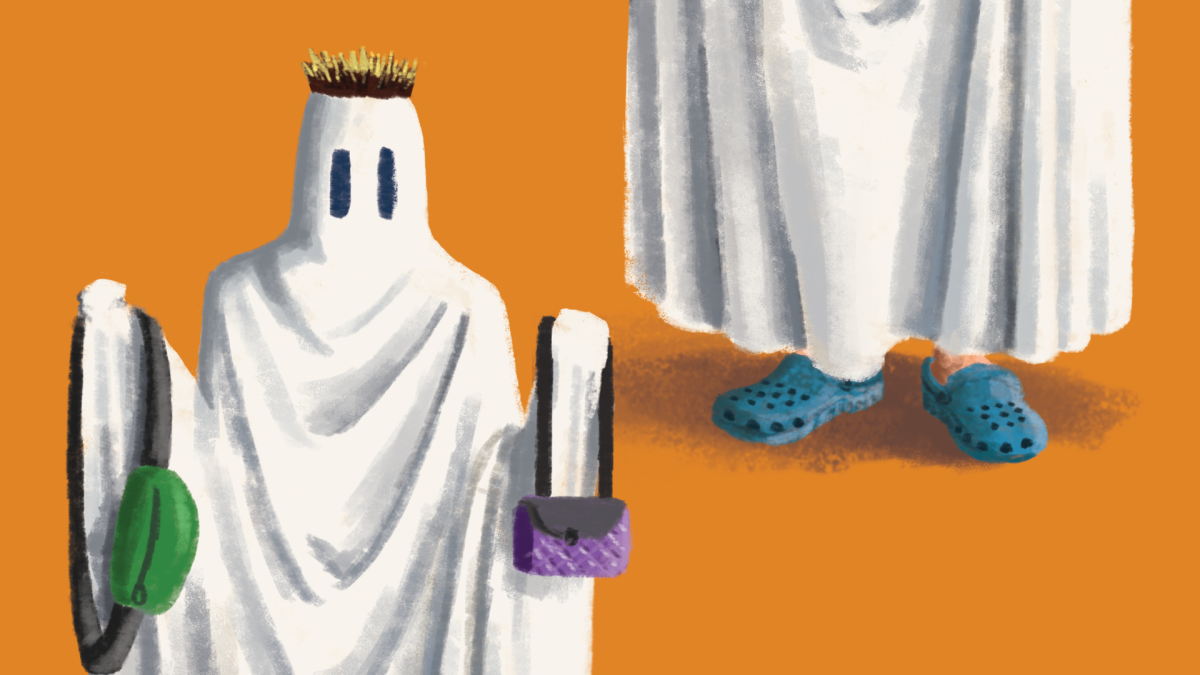Fashion comes and goes, but the most haunting trends would need an exorcism to be removed from my mind.
The fashion industry is fast-paced and always facing pressure to develop the newest phenomenon. With a quick turnover, mistakes are unavoidable and difficult to avoid.
Sometimes, these missteps in the fashion framework still manage to catch on, and we are left with haunting memories like a framed graduation photo with 2016 way-too-thick eyebrows immortalized on your grandma’s mantle.
This fall has been no exception to the blips of nonsense coming from the runway. We’re only a month into the season, and there is more than enough to keep my nightmares fueled.
What first comes to mind is the 2024 Victoria’s Secret Fashion Show. After a six-year hiatus, the brand announced that its widely popular fashion show would return in October 2024. This drummed up a lot of buzz and turned it into arguably one of the most anticipated fashion moments of the year. High hopes surrounded the brand’s reemergence into the spotlight — people expressed their hopes and dreams for the event, and the live stream brought in a lot of viewers.
There was no shortage of talent at the show, with models such as Bella and Gigi Hadid, Adriana Lima, Alex Consani and Ashley Graham. However, some of the artistic choices fell noticeably short.
Slick-back ponytails have been a staple hairstyle for 2024 — great for an everyday look and can be dressed up for a fancy occasion. However, when Victoria’s Secret changed their signature bombshell, blown-out curls to a more muted slick back, it caused a major divide amongst long-time fans, who wished they had stuck to what they know works best.
As part of another attempt to modernize, many of the normally intricate, feathered and fantastical angel wings worn by the models were reduced to plastic, shiny weaved patterns that felt more like shrunken PVC pipes instead of head-turning masterpieces.
The 2024 Victoria’s Secret Fashion show pointed to a larger trend within the fashion industry: minimalism. The intricacy of fashion is on a steep decline, with runway looks sticking to solid colors and sleek designs.
The denim-on-denim trend debuted on the runways of popular brands Fendi, Schiaparelli and Rokh to inspire 2024 fall fashion. The trend consists of wearing an outfit consisting only of denim pieces.
While it’s not impossible to get creative with your fully-jean outfit, it does point to the overall trend of uniformity in fashion.
If we go back in time, such as to the Victorian era, clothes were significantly more intricate, but of course that was at the cost of being less functional. While it’s unreasonable to demand that we bring back corsets and ball gowns, it would be nice to see the same level of creativity and craftsmanship incorporated into the functionality of modern clothing.
Comparing Victorian fashion, architecture or even handwriting to modern aesthetics is always a fascinating lens into how modernization has become synonymous with reducing uniqueness and intricacy.
The “coquette” trend revived inspiration from the Victorian era. Coquette fashion features feminine silhouettes, pastel colors and lots of dainty pink bows.
The coquette aesthetic has trickled in and out of popularity starting in the 1990s and has continued to be revived by pop culture moments like the 2020 release of the show “Bridgerton.”
In 2023, the trend flew to the front pages of fashion magazines. “Coquette aesthetic” amassed over 1.5 billion views on TikTok, and bows flew to the shelves of every major fashion brand.
Unfortunately, the commercialization of coquette also meant the removal of much of the creativity that followed behind the trend. Brands like Urban Outfitters began producing clothing lines with bows jammed into every seam.
A year later, we have yet to see any real ingenuity from the major corporations that have taken over mass production of the coquette trend. Instead of continuing to build on Victorian inspiration, they have stopped at the bare minimum, expecting us to see a black sweater with a bow on it and call it a return of the Renaissance.
Fashion is a form of personal and artistic expression, but it’s also very dependent on functionality. Clothes that aren’t wearable won’t be worn.
However, functionality and minimalism are not synonymous. It is up to fashion designers to continue finding ways to create clothing that is both practical and demonstrates artistic ingenuity.








